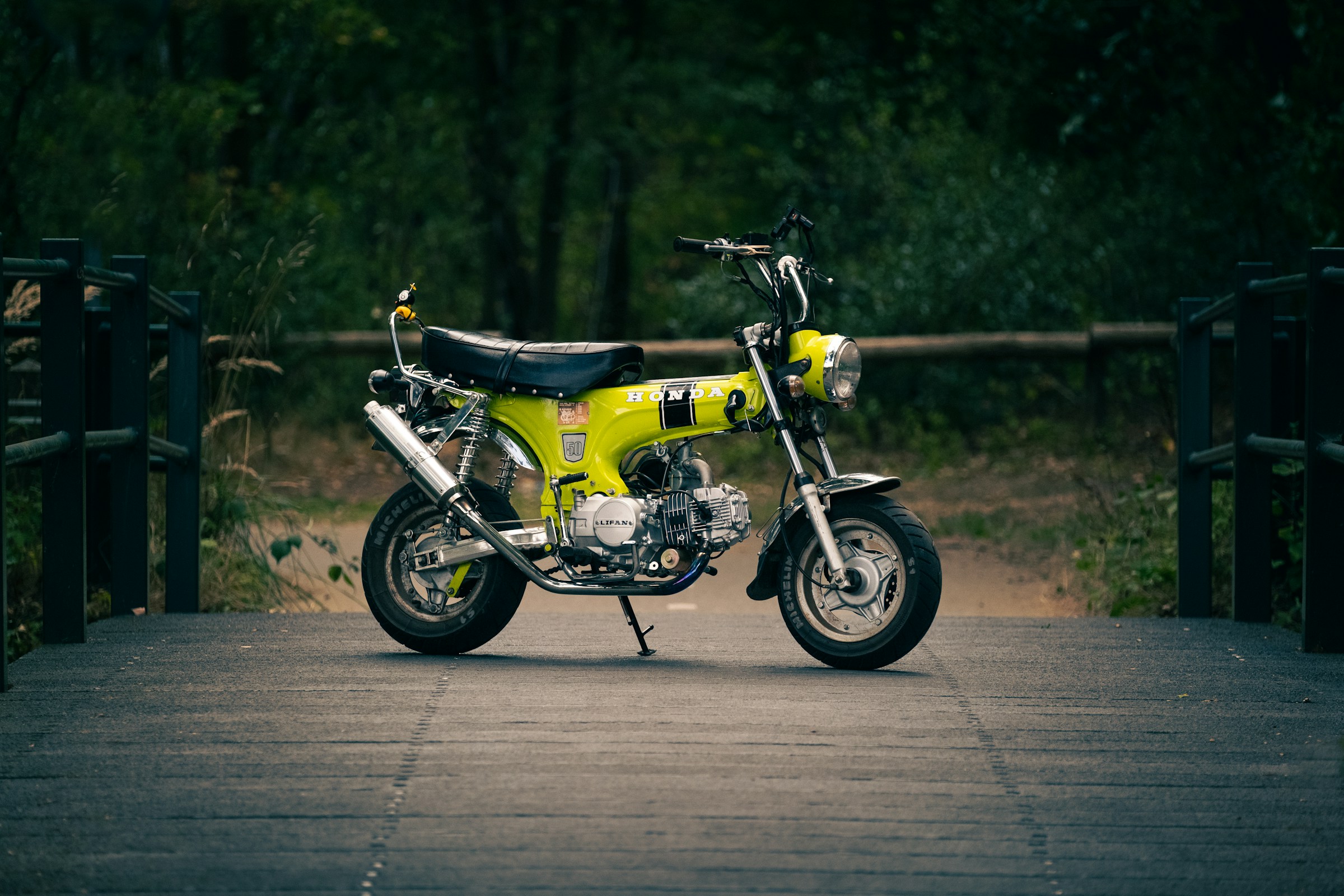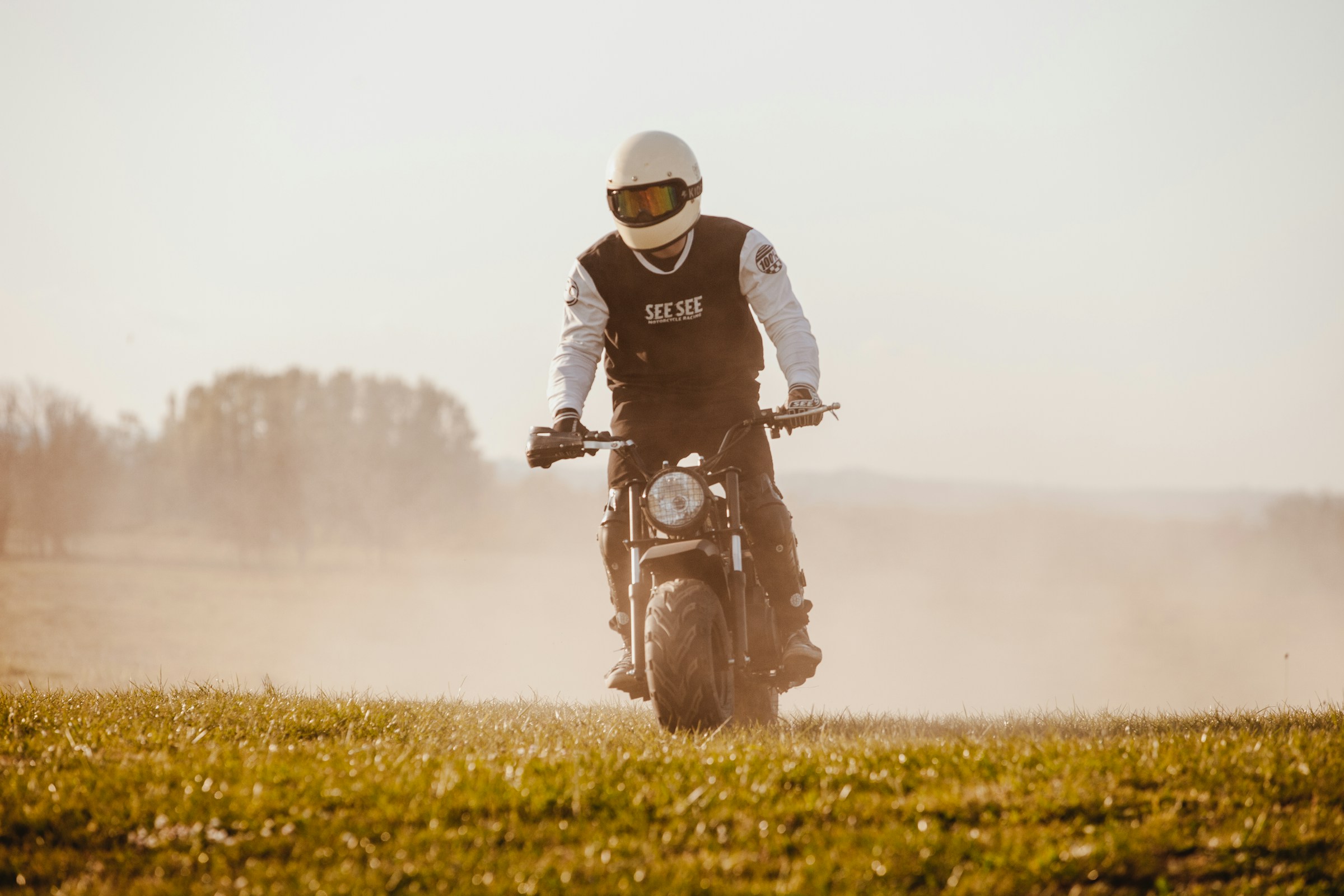Dreaming of carving up dirt trails without wrangling a full-size beast? A mini dirt bike might be exactly the thrill machine you or your young rider needs.
This guide walks through what counts as “mini,” how to pick the right model, and the smartest ways to protect your new investment.

What Counts As “Mini”?
A “mini” dirt bike usually sits in the 50 cc-125 cc engine range and sports a seat height of roughly 20-30 inches.
That compact footprint keeps weight low, boosts confidence for shorter riders, and makes transport easy. They’re distinct from “pit bikes,” which are similar but aimed at quick paddock transport, and of course from full-size dirt bikes.
Why Choose a Mini First?
- Lower Cost: Entry minis start around $500-$1,700, which is roughly half the price of many full-sized off-roaders.
- Manageable Power: Throttle response is forgiving, letting new riders learn clutch control without wheel-spinning drama.
- Easy Storage/Transport: Their modest dimensions fit in garages or sheds. Protecting your bike during storage is critical; lightweight motorcycle covers from Car Covers Factory shield against UV damage and moisture.
Gas vs. Electric at a Glance
Gas minis provide classic engine sound and longer range, while electrics deliver near-silent operation and minimal maintenance.
Electrics are ideal for suburban areas where noise may be a concern, requiring just a simple charge to be ready to ride.
Kids Versus Adult Mini Bikes
Frame Size & Weight Limits
- Ages 6-9: 40-70 lb riders often thrive on 50 cc, 21 in seat-height bikes.
- Ages 10-13: 70-110 lb riders may jump to 70-110 cc engines around 24 in seat height.
- Teens & Smaller Adults: 110-125 cc bikes with 25-30 in seat heights provide more torque without overwhelming heft.
Safety statistics from the Consumer Product Safety Commission show that correctly sized bikes reduce youth injury risk by up to 34 percent. This data underscores the critical importance of selecting a bike that fits the rider properly from the start.
| Key Insight: Sizing isn’t just about comfort. The CPSC confirms that a correctly sized bike can reduce the risk of youth injury by up to 34%, making it the most critical safety decision you’ll make. |
Key Buying Factors & Feature Checklist
Engine Size
- 50 cc: Perfect for the first twist of the throttle.
- 110 cc: Step-up class with semi-automatic options for smooth shifting. Exploring a quality NTX Power Sports’ rugged dirt bike can be a reliable launchpad for growing riders.
- 125 cc: Manual clutch practice and more suspension travel.
Suspension & Brakes
Hydraulic disc brakes and adjustable forks add cost but pay dividends in control and stopping power. These features are especially valuable on uneven terrain where predictable handling is key to building rider confidence.
Warranty & Parts
Before purchasing, confirm you can easily source replacement parts like brake pads or levers. Brands with U.S. parts depots or strong dealer support networks simplify long-term ownership and maintenance.
Pre-Purchase Checklist
- ☐ Seat height matches inseam (feet on the ground, heels slightly lifted)
- ☐ Throttle limiter (for younger riders)
- ☐ Kill switch lanyard (safety)
- ☐ Available parts catalog
| Pro Tip: Before checking any other feature, ensure the rider’s feet can touch the ground with heels slightly lifted. If the bike fails this simple inseam test, it’s too big and unsafe. |
Essential Safety Gear & Riding Rules
While mini dirt bikes are smaller, the risks associated with motorcycling still apply. According to the NHTSA, in 2023, there were 6,335 motorcyclists killed, representing 15% of all traffic fatalities. This data highlights why safety should never be compromised.
Furthermore, federal data shows that per vehicle miles traveled, motorcyclists were about 28 times more likely than passenger car occupants to die in a crash. Prioritizing certified gear and proper training is essential for mitigating these inherent risks.
Gear Checklist
- DOT or ECE-certified helmet (look for multi-density EPS liners)
- Motocross boots with ankle bracing
- CE-level 1 or 2 knee and elbow guards
- Neck brace for kids under 12 learning jumps
Riding Rules
- Adult supervision until proficiency is proven
- Scan terrain 30 ft ahead for ruts or sudden grade changes
- Respect local speed limits and no-ride zones
| Important: Never treat safety gear as optional. A DOT or ECE-certified helmet is the most critical investment, offering proven protection against severe head injuries. Prioritize it in your budget. |
Understanding Local Regulations
Many states classify mini dirt bikes as Off-Highway Vehicles (OHVs) requiring registration or a trail permit. Age limits also vary widely between states. For example, some jurisdictions require rider certification for youths under a certain age, while others have different rules for private land.
Always confirm the specific regulations with your state’s DMV or department of parks and recreation before you ride. This simple step can prevent fines and ensure you are operating your vehicle legally and safely.
Protecting & Maintaining Your Mini Dirt Bike
Physical Security
A hardened disc lock plus a 12 mm chain through the frame deters snatch-and-grab thefts. For extra peace of mind, a sticker-sized GPS tracker hidden under the seat lets you locate a stolen bike within minutes.
Smart Storage
Sun and moisture age plastics and cables quickly, diminishing the bike’s value and appearance. Storing your bike under a quality cover shields it from UV damage, pollen, and rain, which is ideal for outdoor or carport parking.
Routine Maintenance
- Break-in: First 2 hours at variable throttle, no wide-open blasts.
- Oil: Change after 5 hours on a new engine, then every 15 hours.
- Chain: Clean and lubricate after each muddy session; maintain 1-inch slack.
- Air Filter: Wash foam filters in a cleaner and oil lightly every other ride.
| Key Insight: Two habits prevent most engine problems: changing the oil after the first 5 hours of use and cleaning the air filter after every dusty ride. Master these for maximum reliability. |

Frequently Asked Questions
Gas or electric – what’s cheaper long-term?
Electric saves on fuel, but replacement batteries can be costly. Gas engines need regular oil changes, but parts are inexpensive. Over five years, the total ownership costs for both types are often very similar.
Do mini bikes need registration?
On private land, registration is usually not required. However, public OHV trails often mandate a permit sticker. Always check local rules to be sure you are in compliance with the law.
How long is the break-in period?
The break-in period is typically around two engine-hours or one gallon of fuel. This can vary by manufacturer, so it is always best to consult your owner’s manual for specific recommendations.
Where can I find parts?
Major brands carry OEM parts catalogs, making it easy to find what you need. For popular engine classes, you can find nearly every component through online suppliers or local dealerships.
The Path Forward
Choosing the perfect mini dirt bike boils down to three key steps. First, pick the right size and engine for the rider. Second, gear up responsibly, and finally, protect the bike through smart storage and routine maintenance.
By following these guidelines, you’ll be set for years of roost-throwing fun. Ride safe, ride smart, and we’ll see you on the trail!
Article Last Updated: November 21, 2025.
